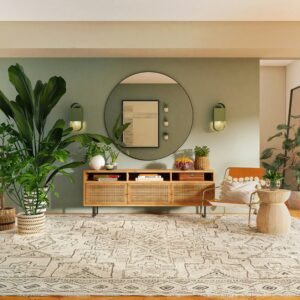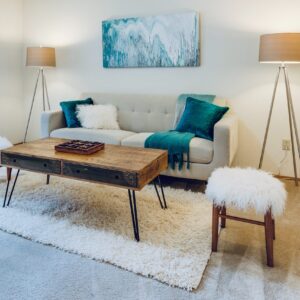The Art and Science of Interior Design: Unveiling the Duties of an Expert Interior Designer
Introduction:
Interior design is a nuanced and multifaceted field that goes beyond mere aesthetics. Expert interior designers play a crucial role in transforming spaces into functional, beautiful, and harmonious environments. In this blog, we will delve into the 49 essential duties that define the work of an interior designer, showcasing the intricate balance of creativity and practicality in this dynamic profession.
- Client Consultation: Initiate projects by conducting thorough client consultations to understand their needs, preferences, and lifestyle.
- Space Planning: Develop detailed space plans to optimize the functionality and flow of a given space.
- Budget Management: Work with clients to establish and manage budgets, ensuring the efficient use of resources.
- Concept Development: Craft design concepts that align with the client’s vision, incorporating style, theme, and mood.
- Material Selection: Curate a palette of materials, finishes, and furnishings that suit the design concept and budget.
- Color Coordination: Artfully choose and coordinate colors to evoke specific emotions and create cohesive interiors.
- Furniture Selection: Source and select furniture that complements the design concept while meeting functional needs.
- Lighting Design: Devise thoughtful lighting plans to enhance both functionality and ambiance within a space.
- Custom Design Solutions: Create custom design solutions, from bespoke furniture to unique spatial configurations.
- Textile and Fabric Selection: Select textiles and fabrics that contribute to the overall aesthetic while considering durability and maintenance.
- Art and Accessories Curation: Curate art pieces and accessories that enhance the visual appeal of the space.
- Environmental Psychology: Consider psychological aspects of design to create spaces that promote well-being and comfort.
- Sustainable Design Practices: Integrate sustainable and eco-friendly design practices into projects for a responsible approach.
- Construction Oversight: Collaborate with architects and contractors to oversee construction and ensure design integrity.
- Project Management: Efficiently manage projects, timelines, and resources to meet client expectations.
- Client Presentations: Deliver compelling presentations to clients, effectively communicating design concepts and solutions.
- CAD and 3D Modeling: Utilize computer-aided design (CAD) and 3D modeling to visualize and communicate design concepts.
- Site Analysis: Conduct comprehensive site analyses to understand the physical and environmental context.
- Building Codes and Regulations: Stay informed about building codes and regulations to ensure design compliance.
- Client Education: Educate clients about design choices, helping them make informed decisions aligned with their goals.
- Vendor and Contractor Coordination: Collaborate with vendors and contractors, ensuring seamless execution of design plans.
- Project Documentation: Maintain meticulous project documentation, including drawings, specifications, and contracts.
- Trend Analysis: Stay abreast of design trends and innovations, incorporating fresh ideas into projects.
- Communication Skills: Possess excellent communication skills to convey ideas clearly and foster strong client relationships.
- Attention to Detail: Demonstrate an acute attention to detail in every aspect of the design process.
- Problem-Solving: Navigate and resolve challenges that may arise during the design and implementation phases.
- Adaptability: Remain flexible and adaptable to evolving client needs and project requirements.
- Project Evaluation: Conduct post-project evaluations to assess successes, challenges, and areas for improvement.
- Client Feedback Incorporation: Integrate client feedback into the design process, ensuring satisfaction and alignment.
- Continuing Education: Pursue ongoing education to stay current with industry trends, technologies, and best practices.
- Networking: Build and maintain a strong professional network within the design and construction industries.
- Vendor and Supplier Relationship Management: Cultivate positive relationships with vendors and suppliers for reliable and quality resources.
- Accessibility Considerations: Incorporate accessibility features into designs for inclusive and user-friendly spaces.
- Cultural Sensitivity: Demonstrate cultural sensitivity and awareness when designing for diverse clients.
- Product Knowledge: Stay informed about the latest products and materials, understanding their uses and benefits.
- Negotiation Skills: Negotiate effectively with vendors, contractors, and clients to achieve favorable outcomes.
- Design Research: Conduct thorough design research to inform and inspire creative solutions.
- Time Management: Efficiently manage time and prioritize tasks to meet project deadlines.
- Client Confidentiality: Uphold client confidentiality and ethical standards throughout the design process.
- Client Education on Maintenance: Educate clients on the maintenance and care of design elements for longevity.
- Risk Management: Identify and manage potential risks associated with design decisions and project execution.
- Project Marketing: Engage in marketing efforts to promote interior design services and attract new clients.
- Home Staging: Offer home staging services to enhance the market appeal of residential properties.
- Collaboration with Other Design Professionals: Collaborate seamlessly with architects, landscape designers, and other design professionals.




















